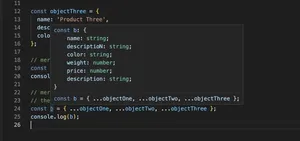Overview
In this tutorial, we delve into the world of TypeScript, a powerful superset of JavaScript that adds static types to our code, making it more robust and maintainable. Specifically, we’ll focus on a common task when working with the Document Object Model (DOM) in web development: getting the first or last child node of an element.
Manipulating the DOM is a frequent requirement in web development, allowing us to interact with and modify HTML and XML documents. When working with dynamic content, it becomes essential to understand how to efficiently find and manipulate child nodes.
Understanding the DOM Structure
Before diving into the code, let’s briefly revisit the DOM hierarchy. The DOM represents the document as a tree of nodes, including elements, text, and other types. An element node can have child nodes of various types, and understanding how to access these is crucial for DOM manipulation.
Prerequisites
- Basic knowledge of HTML and JavaScript.
- Basic understanding of TypeScript syntax.
- A local or online development environment where you can write and test TypeScript code.
Getting Started with TypeScript
To begin, ensure TypeScript is installed and set up in your development environment. We’ll be using TypeScript for our examples, as it offers type checking and other features that enhance JavaScript code.
Example 1: Setup TypeScript
npm install -g typescriptCompile your TypeScript files to JavaScript using the following command:
tsc filename.tsAccessing First and Last Child Nodes
Let’s get to the core of this tutorial. The concept applies to both the first and last child nodes of an element, with only slight variations in the approach.
Finding the First Child Node
Example 2: Using firstChild
const parentElement: HTMLElement = document.getElementById('parentElementId') as HTMLElement;
const firstChild: Node | null = parentElement.firstChild;
if (firstChild) {
console.log('First Child:', firstChild);
} else {
console.log('No children found');
}This example demonstrates how to retrieve the first child node of a specified element. The firstChild property returns the first child node as a Node object or null if there are no children.
Finding the Last Child Node
Example 3: Using lastChild
const parentElement: HTMLElement = document.getElementById('parentElementId') as HTMLElement;
const lastChild: Node | null = parentElement.lastChild;
if (lastChild) {
console.log('Last Child:', lastChild);
} else {
console.log('No children found');
}Similar to firstChild, lastChild gets the last child node. It’s straightforward but powerful for traversing and manipulating the DOM.
Type Checking and Node Types in TypeScript
TypeScript’s type system comes in handy when dealing with DOM elements. Understanding the different types of nodes (e.g., Element, TextNode) and using type guards and assertions properly can significantly enhance your coding experience.
Enhancing with Type Checks
Example 4: Type Checking with instanceof
const firstElementChild: Element | null = parentElement.firstElementChild;
if (firstElementChild instanceof HTMLElement) {
// Safe to access HTMLElement specific properties
console.log('First Element Child:', firstElementChild.tagName);
}This approach uses firstElementChild for elements and includes a type check to ensure correct handling of the node type. It demonstrates how TypeScript’s type safety features can be used to write more reliable code.
Conclusion
With these examples and explanations, you should now feel more comfortable working with the first and last child nodes in TypeScript. Remember, the key to mastering DOM manipulation lies in understanding the DOM structure, utilizing TypeScript’s type system, and practicing.
Utilize the power of TypeScript to ensure your code is not just working, but also robust and maintainable. Experiment with the techniques showcased, and don’t hesitate to integrate them into your web development projects.
